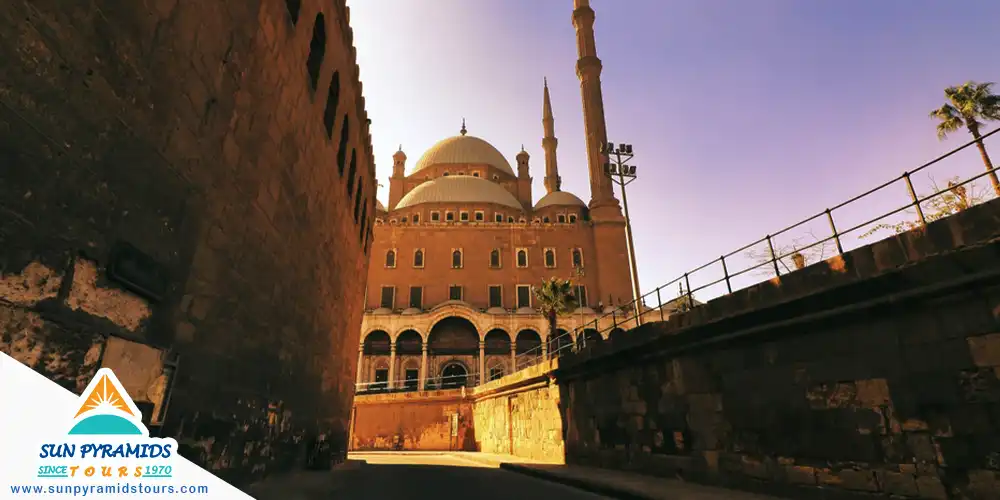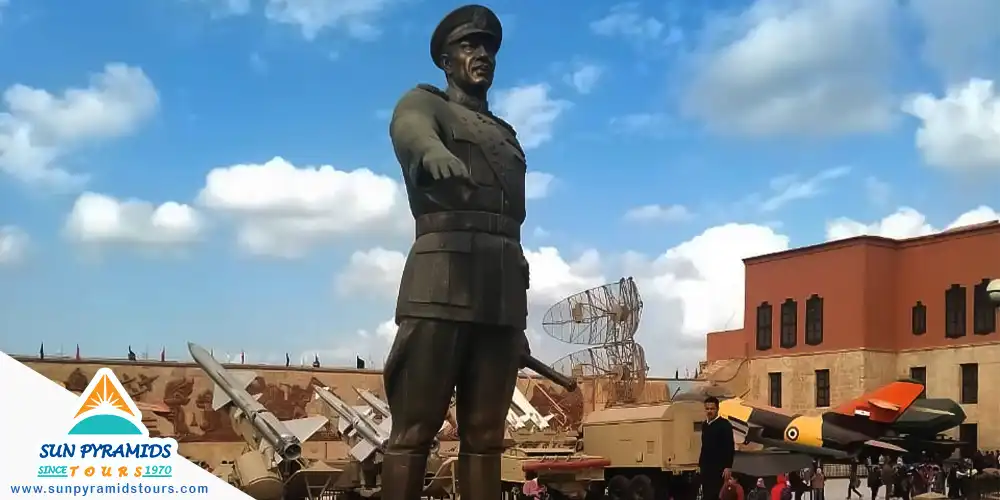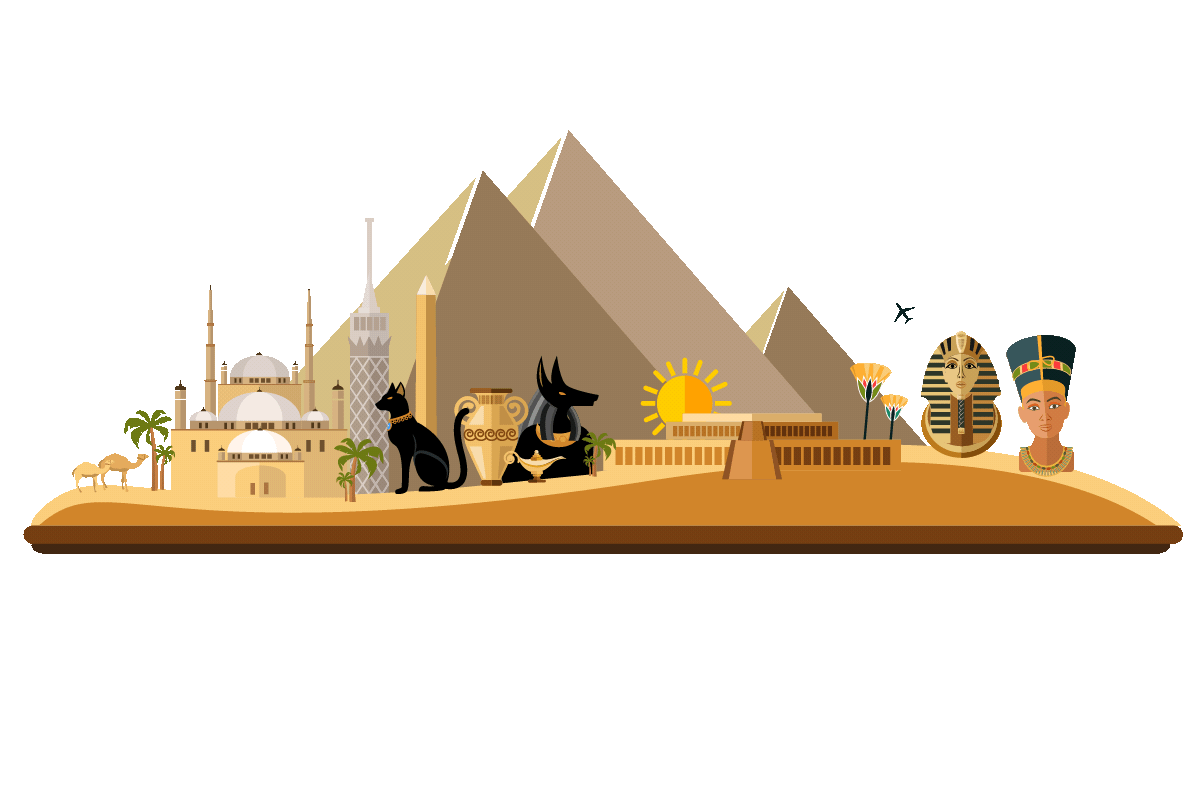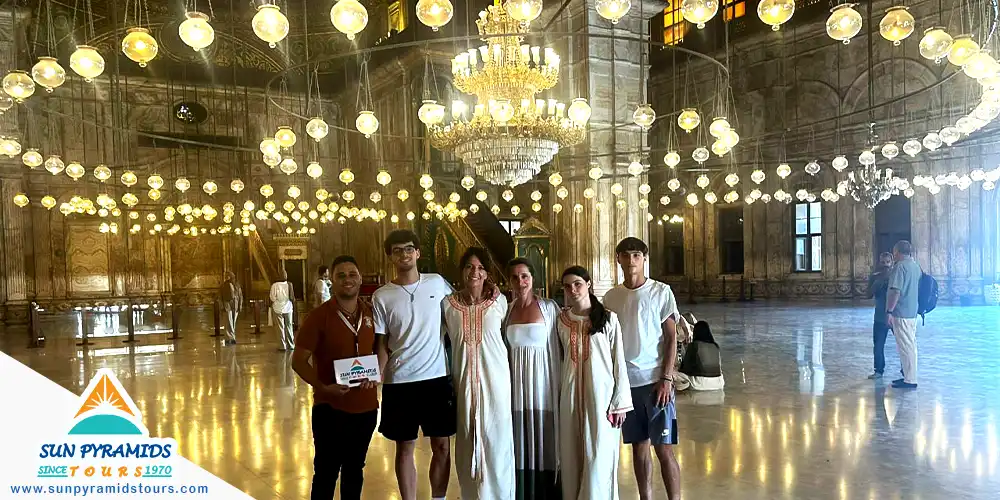Table of Content
The History of the Citadel of Saladin
The Four Main Mosques in the Citadel Today
Museums of Cairo Citadel
Salah El Din Citadel
Perched on the Mokattam hills overlooking Cairo, the Citadel of Saladin is a monumental fortress that has witnessed centuries of Egyptian history. Built by Salah ad-Din (Saladin) in the 12th century, the Citadel originally served as a military stronghold to protect Cairo from Crusader attacks. Over time, it became a royal residence and the seat of Egypt’s government for nearly 700 years, until the construction of Abdeen Palace in the 19th century.
Strategically located on a promontory, the Citadel commands sweeping views of Cairo, dominating the skyline with its imposing architecture. At the time of its construction, it was one of the most ambitious military fortifications in the world. Successive rulers, from the Ayyubids to the Mamluks and later Muhammad Ali Pasha, expanded and transformed the Citadel, leaving their marks on this iconic site.
Today, the Citadel is a well-preserved historic monument, home to stunning mosques, museums, and palaces. Recognized by UNESCO as part of the World Heritage Site Historic Cairo, the Citadel of Saladin remains one of Cairo’s most treasured landmarks, reflecting the city’s rich Islamic heritage and its pivotal role in the region's history.
The History of the Citadel of Saladin

-
Journey through the centuries with Sun Pyramids Tours as we explore the rich history of the Citadel of Saladin. From its foundation by Salah ad-Din in the 12th century to its expansion under the Mamluks, and its transformation by Muhammad Ali in the 19th century, the Citadel stands as a symbol of Egypt's resilience and power. Join us to experience this monumental fortress!
-
Ayyubid Foundation and Construction: 12th–13th Centuries:
The Citadel's foundation was laid by Salah ad-Din in 1176, marking the beginning of the History of Salah El Din Citadel. It was constructed to defend Cairo from potential Crusader attacks and to provide a secure center of government for his newly established regime after dismantling the Fatimid Caliphate. Inspired by fortified citadels in Syrian cities like Damascus and Aleppo, which Saladin was familiar with, the Citadel became a symbol of Egypt's military strength. In addition to the fortress, Saladin envisioned a 20-kilometer wall to encircle both Cairo and Fustat, creating a unified defense for the region. Although the Citadel was completed by 1183–1184, the grand wall project continued for decades after Saladin's death, reflecting his ambition to protect Cairo from external threats.
-
Mamluk Period: 13th–16th Centuries:
Under the Mamluks, the Citadel flourished as both a royal residence and administrative center, reflecting its growing importance in the History of Salah El Din Citadel. The early Bahri Mamluk rulers, such as Al-Zahir Baybars, Al-Mansur Qalawun, and Al-Nasir Muhammad, significantly expanded the Citadel's Southern Enclosure, adding monumental structures that showcased their power. Sultan Al-Nasir Muhammad, in particular, contributed to the Citadel's grandeur by rebuilding the audience hall, palaces, and mosques. These new buildings were designed not only for function but also to dominate Cairo's skyline, making the Citadel a visible symbol of Mamluk authority. Though many of these structures have not survived, their legacy endures as part of the Citadel's rich history.
-
Ottoman Period: 16th–18th Centuries:
After the Ottoman conquest in 1517, the Citadel remained a center of power in the History of Salah El Din Citadel. However, Sultan Selim I stripped the monumental Mamluk buildings of their valuable materials, such as marble panels, and shipped them to Istanbul for use in his projects. This marked the beginning of a period of neglect for the Citadel, during which many Mamluk structures fell into ruin. Some Citadel walls were rebuilt or extended in the 16th and 17th centuries, but the overall condition deteriorated.
The Ottomans divided the Citadel into three sections to accommodate rival military corps. The Northern Enclosure housed Janissary barracks, the Southern Enclosure became the residence of the Ottoman pasha and his troops, and a lower western enclosure held the stables and the 'Azaban corps. Each area had its own mosque and facilities, with abandoned or underused Mamluk buildings standing between them. The grand Great Iwan of Al-Nasir Muhammad, for instance, saw its dome collapse in 1521 and was never rebuilt. Despite the decay, the Ablaq Palace was repurposed as a manufacturing center for weaving the Kiswah, the cloth covering the Kaaba in Mecca, which continued to be produced in Cairo until the 20th century.
-
Muhammad Ali: 19th Century:
In the 19th century, Muhammad Ali Pasha, an Albanian-born ruler appointed by the Ottoman sultan, transformed the History of Salah El Din Citadel into a symbol of his new Egypt. After consolidating power through a violent coup in 1811—famously eliminating the remaining Mamluk leaders in a brutal massacre at the Citadel—Muhammad Ali set about modernizing both Egypt and the Citadel. His most iconic contribution was the construction of the Alabaster Mosque, a monumental structure that dominates Cairo's skyline to this day.
In addition to building the mosque, Muhammad Ali renovated much of the Citadel, turning it into a reflection of his ambitious modernization efforts. His vision was to create a fortress that showcased his rule and Egypt's newfound strength. The renovations gave the Citadel a new architectural character, blending traditional elements with modern influences, and made it a centerpiece of Egypt’s transformation during the 19th century. Muhammad Ali’s reforms and construction projects at the Citadel remain a lasting testament to his impact on Egypt’s history.
-
20th Century and Present Day
During the 20th century, the History of Salah El Din Citadel took a new turn as it transitioned from a military garrison to a public historical monument. Initially used by the British Army during their occupation of Egypt, the Citadel remained under military control until 1946. Afterward, it served as a base for the Egyptian military for many years. It wasn't until 1983 that the Egyptian government opened significant portions of the Citadel to the public. Restoration efforts were launched to preserve its grandeur, and several historic buildings were repurposed into museums.
Today, the Citadel is a major tourist destination, attracting visitors from around the world. It offers a glimpse into Egypt’s rich military and architectural history through its museums and attractions. Despite its transformation into a public monument, the Citadel still retains a military presence, blending its historical significance with modern-day uses. The ongoing preservation efforts ensure that this iconic fortress remains a key landmark in Cairo’s cultural landscape.
-
Architecture and General Layout of the Citadel
The Architecture of Saladin Citadel is a remarkable blend of medieval, Mamluk, and Ottoman styles, reflecting centuries of development and adaptation. The fortress complex is primarily divided into two sections: the Northern Enclosure, historically reserved for military garrisons and now home to the National Military Museum, and the Southern Enclosure, which housed the sultan's residence and today features the iconic Mosque of Muhammad Ali. Additionally, a lower, western enclosure once held the royal stables of the Mamluks. These functional distinctions were largely transformed in the 19th century under Muhammad Ali Pasha, who overhauled the site and added buildings serving various purposes throughout the Citadel.
To the west and southwest of the Citadel, a vast open field, often referred to as the "hippodrome," served as a training ground for horsemanship and military parades. Though the field is no longer intact, its outline remains visible in the layout of nearby roads, such as Salah ad-Din Street. At the northern end of this hippodrome was Rumayla Square, today known as Salah al-Din Square, a significant space for horse markets and royal ceremonies. This plaza, located near the towering mosques of Sultan Hassan and Al-Rifa'i, remains a prominent landmark, continuing the Citadel's historical legacy as a center of power and culture in Cairo.
-
Water Supply System
Explore the ingenious water supply system of the Cairo Citadel with Sun Pyramids Tours. Visit Salah ad-Din's Well, a 90-meter deep marvel ensuring water during sieges, and discover the Mamluk Aqueduct, which transported water from the Nile. Delve into the history of the Cistern of Ya'qub Shah al-Mihmandar, a key storage system. Join us and uncover the secrets behind these architectural innovations!
-
Salah ad-Din's Well:
Known as the Well of Joseph, this remarkable structure, reaching over 90 meters (280 feet) deep, is a masterpiece of medieval engineering and an essential feature of the Architecture of Saladin Citadel. Built by Saladin’s chief eunuch and confidant, Qaraqush, the well was designed to supply water to the Citadel during sieges, ensuring the fortress always had access to a reliable source. The well, also called Bir Yusuf, after Saladin’s birth name Yūsif, is divided into two main sections. The upper shaft is surrounded by a long spiral staircase, separated from the main shaft by only a thin wall of rock, giving it the nickname the Spiral Well (Bir al-Halazon).
At the bottom of the upper section, oxen powered a waterwheel that raised water from the lower shaft, which reached down to the underground water seeping from the Nile. Another waterwheel at the top, also powered by oxen, lifted the water the rest of the way to the Citadel’s surface. This ingenious design provided a continuous water supply during times of need, making the well a crucial component of the Citadel’s defenses and a testament to the advanced engineering of the period.
-
The Mamluk Aqueduct:
Built by Sultan al-Nasir Muhammad, the Mamluk Aqueduct was a crucial addition to the Architecture of Saladin Citadel, transporting water from the Nile to the fortress. During al-Nasir Muhammad’s reign, Saladin's well alone was insufficient to meet the needs of the Citadel’s growing population and the ambitious construction projects that al-Nasir envisioned. To address this, al-Nasir renovated and extended an existing Ayyubid aqueduct system, likely completed by his predecessor al-Kamil.
The new system was an impressive feat of medieval engineering. It featured multiple water wheels on the Nile, which raised water to the top of a hexagonal tower built by al-Ashraf Khalil. From there, the water flowed along a series of elevated aqueducts to the base of the Citadel, where it was further transported to the palaces via another network of waterwheels. Despite the efficiency of this system, Saladin's well remained essential, especially during sieges when external water supplies could be cut off. The Mamluk Aqueduct exemplifies the ingenuity and foresight in the Citadel's design, ensuring a continuous water supply for its inhabitants.
-
The Cistern of Ya'qub Shah al-Mihmandar:
This large cistern, constructed during the Mamluk era, ensured a steady fortress water supply. Built in 1495–96 by Ya'qub Shah al-Mihmandar, a Mamluk amir from Erzincan (Turkey), the cistern was covered by a small domed building located just outside the Citadel to the east. Though it resembles a mausoleum due to its dome, this structure actually provides access to the underground cistern. The building also features an inscription commemorating Sultan Qaytbay's victory over Ottoman forces at Adana in 1486.
The cistern played a crucial role in water storage for the Citadel, particularly during times of siege, helping to ensure that the fortress could remain self-sufficient for extended periods. Unfortunately, today it stands isolated between two major highways—Salah Salem Road and Kobri al-Ebageah—which cut it off from the Citadel itself. Despite this, the cistern remains a testament to the advanced engineering and strategic planning of the Mamluk period, contributing to the Citadel's ability to withstand prolonged attacks.
The Four Main Mosques in the Citadel Today
Explore the spiritual heart of the Cairo Citadel with Sun Pyramids Tours as we guide you through its four iconic mosques. Marvel at the majestic Muhammad Ali's Alabaster Mosque, a symbol of Ottoman grandeur with its towering domes and alabaster walls. Step back in time at the historic Al-Nasir Muhammad Mosque, once the royal mosque of the Citadel, and admire its Mamluk architecture. Discover the early Ottoman influence at the elegant Mosque of Sulayman Pasha, one of the first of its kind in Cairo. Finally, uncover the lesser-known Mosque of al-'Azab, offering a glimpse into the spiritual life of the soldiers stationed at the Citadel. Each mosque reveals a different chapter of Cairo's rich Islamic heritage, making this tour an essential part of your visit. Join us and experience the Citadel's religious splendor!
-
Muhammad Ali's Alabaster Mosque:
With its stunning Ottoman architecture and alabaster walls, this mosque is the most prominent structure within the Architecture of Saladin Citadel. Built by Muhammad Ali Pasha between 1830 and 1848, and completed during the reign of Said Pasha in 1857, the mosque stands proudly within the Southern Enclosure of the Citadel. The mosque's design was inspired by the Sultan Ahmed Mosque in Istanbul, with architect Yusuf Bushnak leading its construction.
Dominating the Cairo skyline, Muhammad Ali's Alabaster Mosque is a symbol of Egypt's modernization under Muhammad Ali's rule. The mosque features an impressive central dome flanked by two towering minarets, and its gleaming alabaster walls are a testament to Ottoman influence in Egypt. In the mosque's courtyard lies the tomb of Muhammad Ali, carved from Carrara marble. His body was moved here in 1857 from its original resting place at Hawsh al-Basha. Today, the mosque remains one of Cairo's most visited landmarks, reflecting the grandeur of 19th-century Ottoman architecture and Muhammad Ali's enduring legacy.
-
Al-Nasir Muhammad Mosque:
Built in 1318 during the early Bahri Mamluk period, the Al-Nasir Muhammad Mosque. Serving as the royal mosque of the Citadel, this hypostyle mosque was where the sultans of Cairo performed their Friday prayers. Though centuries have passed, the mosque remains strikingly similar to how it appeared in the 1300s, despite undergoing numerous repairs and restorations over time.
The mosque features distinctive domes and minarets, which are characteristic of Mamluk architecture. Efforts have been made to restore its original beauty, including reinforcing the plastered walls and attempting to revive the light-blue color of the ceiling. Located in the Southern Enclosure, this mosque served as the spiritual heart of the Citadel for centuries and continues to be a significant religious and historical landmark, reflecting the grandeur of Mamluk design. Open to the public, it remains a must-visit site within the Citadel, offering a glimpse into medieval Cairo's spiritual and architectural heritage.
-
Mosque of Sulayman Pasha:
Dating back to the Ottoman period, the Mosque of Sulayman Pasha, built in 1528, is one of the earliest examples of Ottoman-style architecture in Cairo and a prominent feature among the Attractions in Salah El Din Citadel. As the first mosque within the Citadel to reflect the "classical" Ottoman style of the 16th century, it features elegant domes and intricate designs that marked a shift from the Mamluk architectural influence in the region.
Located in the Northern Enclosure, just northeast of the Harim Palace (now the Military Museum), the mosque was constructed on the site of an earlier Fatimid-era mosque, the Mosque of Sidi Sariyya, built by Abu-Mansur Qasta. Remarkably, Qasta's tomb, dating back to 1140 CE, still exists within the mosque today, making it a site of both historical and spiritual significance. The Mosque of Sulayman Pasha remains one of the few structures in Cairo closely resembling the classical Ottoman design, with its graceful domes and refined decorations, offering visitors a glimpse into the early Ottoman influence in Egypt.
-
Mosque of al-'Azab:
The Mosque of al-'Azab, though smaller than other mosques within the Citadel, holds a significant place among the Attractions in Salah El Din Citadel. Positioned behind the main western gate, Bab al-'Azab, both the mosque and gate were named after the Ottoman military regiments, known as 'Azaban, who were stationed in this part of the Citadel during the Ottoman period. Built by the Mamluk amir Ahmad Katkhuda in 1697, the mosque served as a spiritual hub for the soldiers residing at the fortress.
While the mosque is not open to the public, it remains a key religious site that offers insight into the spiritual life of the garrison. Some historians suggest that the mosque may incorporate elements of an earlier Mamluk religious structure, reflecting the layers of history present within the Citadel. Its pointed Ottoman-style minaret is still visible, standing as a quiet reminder of the soldiers who once relied on this mosque for their daily prayers, marking the intersection of Mamluk and Ottoman influences within the Citadel.
Museums of Cairo Citadel

Embark on a journey through history with Sun Pyramids Tours as we explore the captivating museums within the Cairo Citadel. From the Egyptian Military Museum showcasing Egypt's military heritage, to the opulent Al-Gawhara Palace Museum that reflects the grandeur of Muhammad Ali's reign, each museum offers a unique glimpse into Egypt's rich past. Visit the Carriage Museum to admire the intricately designed royal carriages, and discover the history of law enforcement at the Police Museum. These remarkable attractions make the Citadel an essential stop for anyone seeking to uncover Egypt's fascinating history. Join us for an unforgettable experience!
-
Egyptian Military Museum:
The Egyptian Military Museum, one of the key Attractions in Salah El Din Citadel, showcases Egypt’s rich military history from ancient times to the modern era. Established in 1937, the museum was originally housed in the old Egyptian Ministry of War building in downtown Cairo before being moved to the Harem Palace at the Citadel in 1949. Over the years, the museum has undergone several renovations, including major updates in 1982 and 1993, ensuring that its exhibits remain informative and engaging.
The museum features an impressive collection of weapons, uniforms, and artifacts that highlight Egypt’s military achievements and heritage. Visitors can explore displays that chronicle the evolution of Egypt’s military power, from the days of the Pharaohs to the modern Egyptian Army. With its location in the historic Citadel, the Egyptian Military Museum offers a unique combination of architectural splendor and historical insight, making it a must-visit destination for history enthusiasts and tourists alike.
-
Al-Gawhara Palace Museum:
The Al-Gawhara Palace Museum, also known as Bijou Palace, stands as a luxurious example of 19th-century grandeur among the Attractions in Salah El Din Citadel. Commissioned by Muhammad Ali Pasha in 1814, the palace was crafted by artisans from various countries, including Greece, Turkey, Bulgaria, and Albania, reflecting a blend of international influences in its design. Originally built as a royal residence, the palace now serves as a museum displaying opulent furniture, decorations, and artifacts that offer a glimpse into the lavish lifestyle of the time.
One of the palace's most notable features is Muhammad Ali's official divan, or audience hall, where he received guests in grandeur. The room is adorned with a 1,000 kg chandelier, a gift from Louis Philippe I of France, adding to the space's opulence. Additionally, the palace houses the throne of Muhammad Ali Pasha, a stunning piece gifted by the King of Italy. Today, the Al-Gawhara Palace Museum remains a symbol of the luxurious tastes and diplomatic connections of Muhammad Ali’s rule, making it a key destination for visitors exploring the Citadel's rich history.
-
Carriage Museum:
The Carriage Museum inaugurated in 1983, offers visitors a unique glimpse into the lavish lifestyles of Egypt's royal family. The museum showcases a remarkable collection of royal carriages dating back to different historical periods, from the reign of Khedive Ismail to the era of King Farouk. Each intricately designed carriage reflects the grandeur and elegance associated with Egypt's royal heritage.
In addition to the carriages themselves, the museum also features a variety of unique antiques and accessories related to the carriages, providing further insight into the opulent ceremonies and royal processions of the time. The collection serves as a testament to the craftsmanship and artistic detail that defined Egypt's royal legacy, making the Carriage Museum a must-see for those exploring the rich history of the Citadel.
-
Police Museum:
The Police Museum, also known as the Prison Museum, is a fascinating part of the Attractions in Salah El Din Citadel. Located just north of Bab al-'Alam, the museum offers sweeping views of Cairo from its terrace. Housed in the Citadel's former prison, this museum chronicles the history of Egypt's police force and the evolution of law enforcement in the country.
Exhibits include a wide array of police uniforms, documents, and weapons, tracing the development of Egypt's law enforcement through the centuries. The museum also features displays on famous political assassinations, with exhibits showcasing the murder weapons used in these significant historical events. The Police Museum provides visitors with a unique perspective on the role of law enforcement in Egypt's history and its impact on shaping the nation, making it a noteworthy stop within the Citadel.
Discover Salah El-Din Citadel with Sun Pyramids Tours

Discover the grandeur and rich history of the Salah El-Din Citadel with Sun Pyramids Tours, your gateway to one of Cairo's most iconic landmarks. Explore the breathtaking architecture, from the towering walls and majestic mosques to the fascinating museums that tell the stories of Egypt's past.
Wander through the centuries as our expert guides take you on a journey through the Citadel's remarkable history, from its Ayyubid foundation to its Ottoman-era grandeur. Whether you're marveling at the Alabaster Mosque, uncovering Egypt's military heritage, or simply taking in the panoramic views of Cairo, the Citadel offers an unforgettable experience.
Join us for an immersive tour and create lasting memories at this must-see destination. Book your adventure with Sun Pyramids Tours today!
Why do I book with Sun Pyramids Tours?
1) Expertise and Experience: Sun Pyramids Tours has 53 years of experience in the travel and tourism industry.
2) Customized Itineraries: Sun Pyramids Tours offers tailored itineraries to suit your preferences. Whether you're interested in historical sites, cultural immersion, or adventure activities, we can design a tour that matches your interests.
3) Local Connections and Insider Access: Sun Pyramids Tours can provide you with unique opportunities and insider access to attractions and experiences that may not be easily accessible to independent travelers.
4) Hassle-Free Planning: Sun Pyramids Tours can take the stress out of planning your trip. We handle all the logistics, including accommodations, transportation, and guided tours, at competitive prices… Relax and enjoy your vacation without worrying about the details.
5) Customer Satisfaction: Sun Pyramids Tours prides itself on providing excellent customer service and ensuring customer satisfaction. They strive to meet and exceed your expectations, making your trip enjoyable and memorable. Add trip advisor reviews, Facebook page reviews, etc.
6) Safety and Security: Sun Pyramids Tours prioritizes the safety and security of their guests. We work with trusted partners, adhere to safety guidelines, and provide support throughout your journey to ensure a safe and comfortable travel experience.

.DvizhAGb.gif)
Plan your next adventure now
Related Tours
Frequently Asked Questions
See more

There are no frequently asked questions :)
Related Blogs

Plan A Trip to Egypt
+1 more
Ultimate Guide: How To Plan A Trip To Egypt

Christmas and New Year in Egypt
+1 more
Christmas and New Year in Egypt

Egypt Hidden Gems
+1 more
Egypt Hidden Gems

Abu Simbel Temple
+1 more
Abu Simbel Temple
Need help to Finding your Trip?
Offers
Make Trip
trips
Home



